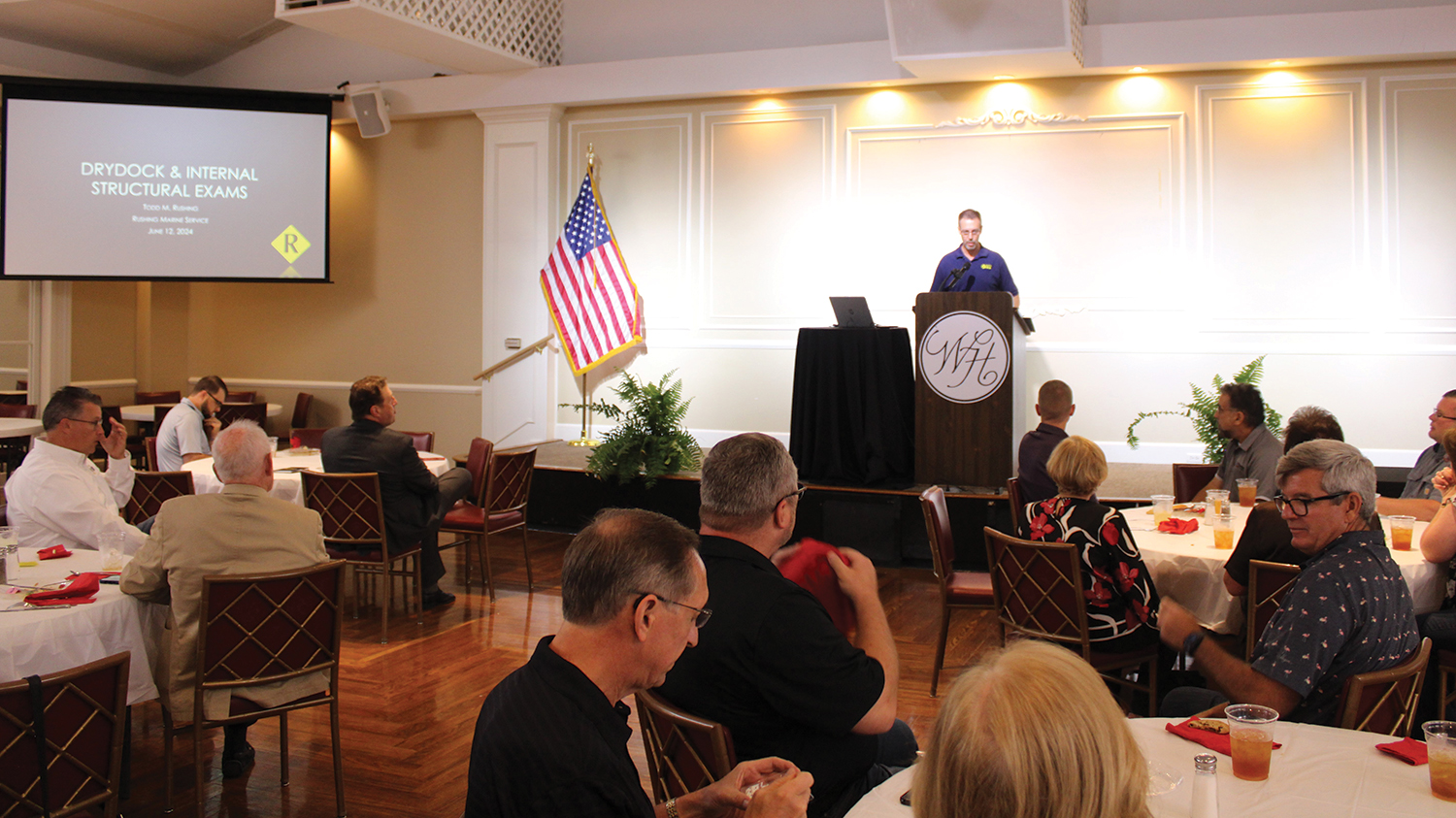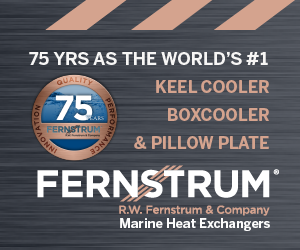Subchapter M credit drydock inspections and internal structural exams were the focus of Todd Rushing’s address to the Port of Paducah Propeller Club during its meeting June 12.
Rushing, who leads Rushing Marine Service of Jackson, Mo., as part of the third generation of the family-owned company, spoke about the requirements and lessons learned so far. Rushing Marine Service has 11 surveyors spread across the country, with several certified to perform the inspections and exams. The team has been involved in about 80 so far, Rushing said.
“We’ve done quite a few and seen most of the things that go on during the drydock process,” he said.
This is the second year for the inspection and exam requirements. Vessels could receive their Certificates of Inspection (COIs) without them initially, but they must have both to recertify. Subchapter M requires the drydock inspections and internal structural exams once every five years for vessels that spend fewer than six months of every 12 months in a saltwater environment and twice every five years, with no more than 36 months between inspections, for vessels that spend more than six months out of every 12 months in such an environment.
While it is possible for vessels to undergo a credit drydock hull inspection and internal structural exam early, that “restarts the clock” on the every-five-year inspections, Rushing said. However, some companies may choose to undergo the evaluations early if a vessel is already laid up for repairs, if it fits better with seasonal operation requirements, or because of the lack of availability of drydock space at other times.
The shortage of available drydock space was always a concern in implementing the requirement for credit drydock inspections and internal structural exams. That concern has proven to be well-founded, Rushing said.
“There are just not enough of them to get them all done on time, so the moral of the story is if you have a boat, you need to start early,” he said.
Boat owners may choose from either Coast Guard-inspected exams or a Towing Safety Management System (TSMS) option, where a third-party surveyor oversees the exams. Rushing said that, while about 75 percent of companies initially chose the TSMS option, “One’s not better than the other. It depends on what your world looks like.”
Boat owners initially had a lot of questions about how to ensure inspections held companies to the same standards, even in different areas of the country.
“There is some gray area for sure,” he said, pointing to four core documents that help standardize the inspections: 46CFR Subchapter M; NVIC 7-68; the Inland Tank Barge Rules; and what is written in a company’s TSMS policy.
Companies should take advantage, as much as possible, of writing into their TSMS when and how certain types of repairs and replacements should be handled if not otherwise directly addressed in the guiding documentation to provide clarity moving forward, he said.
One major issue addressed in such exams is wastage, Rushing said. Hull wastage can be calculated in two ways, either the “as built” method, which allows no more than 25 percent wastage in the original hull thickness, or the “as required” method, which involves mathematical computations of a vessel’s characteristics (such as width, length and framing) to determine what hull plate thickness is required and how much wastage is allowed.
While from time to time most boats were being lifted out of the water for drydock inspections, internal structural examinations are newer to the industry, Rushing said. Exams have found that, while some hulls appear to be in good shape, some boats are “rotting from the inside out,” he said, noting damage to internal bulkheads and framing.
During the credit drydock hull inspection and internal structural exam, surveyors will also look at the shafts, wheels and rudders and look for damage, such as set-ins, cracks and where water may be getting into the vessel.
To conclude, Rushing also showed off two “tools of the trade,” a set-in tool and framing gauge.
Rushing Family Trust
Rushing also gave a brief presentation on Rushing Marine Service’s Rushing Family Trust, which has donated $314,180 directly to 62 charities so far.
The trust saves some of its donations, including those from a golf tournament held annually for 25 years in Jackson, to build toward an endowment that will allow interest to be paid to charitable causes well into the future, he said.
Additionally, the trust funds a scholarship at Southeast Missouri State University that benefits young men and women who have been in the foster care system.
“I can’t thank you all enough for helping make it what it is,” Rushing told club members. “It is one of the things we are most proud of at Rushing Marine.”




